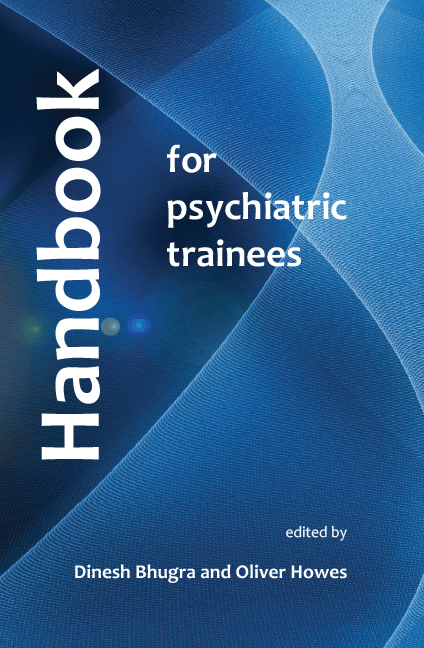Book contents
- Frontmatter
- Contents
- List of tables, boxes and figures
- List of contributors
- 1 Psychiatric training: the next steps
- Part 1
- Part 2
- Part 3
- 14 Personal safety
- 15 Managing violence
- 16 Managing difficult clinical situations
- 17 Understanding and managing stress
- 18 Managing time: the key to professional success
- 19 Negotiation skills
- 20 Presentation skills
- 21 Mental health review tribunals: reports and hearings
- 22 How to get published
- 23 Mental health informatics
- 24 Clinical governance
- 25 Lifelong learning and revalidation
- 26 Mentoring and shadowing
- 27 The MRCPsych examinations
- 28 Flexible training
- 29 UK training for overseas doctors and opportunities for UK doctors to train outside the EEC
- 30 Academic careers
- 31 Higher degrees
- Index
19 - Negotiation skills
from Part 3
- Frontmatter
- Contents
- List of tables, boxes and figures
- List of contributors
- 1 Psychiatric training: the next steps
- Part 1
- Part 2
- Part 3
- 14 Personal safety
- 15 Managing violence
- 16 Managing difficult clinical situations
- 17 Understanding and managing stress
- 18 Managing time: the key to professional success
- 19 Negotiation skills
- 20 Presentation skills
- 21 Mental health review tribunals: reports and hearings
- 22 How to get published
- 23 Mental health informatics
- 24 Clinical governance
- 25 Lifelong learning and revalidation
- 26 Mentoring and shadowing
- 27 The MRCPsych examinations
- 28 Flexible training
- 29 UK training for overseas doctors and opportunities for UK doctors to train outside the EEC
- 30 Academic careers
- 31 Higher degrees
- Index
Summary
You can negotiate when there is a conflict between what you want and what another party wants, provided that you both are willing to do so and have the freedom to adjust the demands and concessions you make in reaching an agreement. Each party shifts its demands and makes concessions until there is a balance to which both can sign up to. Both parties need to agree to a negotiation; it takes two to tango. Because there is a conflict of demands the process is competitive and each party will try to obtain as much as possible for themselves, and give away as little as possible to the other.
You may be negotiating with your colleagues about such issues as when you will be on-call or about room facilities with a manager. You will not be negotiating about pass marks in exams or whether to apply the Mental Health Act, because there will be no freedom for you or another party to adjust demands. Negotiating is a skill that is useful for trainees but increasingly important for consultants because the consultant community is less of a hierarchy and essentially a community of peers which can not be directed by you. Consultants may also find themselves in a negotiation with managers who have little direct authority over clinical issues but control financial resources.
Negotiation is not the only way of resolving a conflict of demands. It may be that you or the other party have enough authority to impose a resolution, or that the situation has to be resolved by law or agreed procedures. Alternatively it may be that you both agree that a third party should arbitrate and you will be bound by their opinion; the jargon for this is ‘binding arbitration’.
ORBits
If there is to be a satisfactory negotiation there has to be some overlap between each party'sinterests. These interests can be represented as a range extending from the maximum they can give away at one end to the most they hope to get in the exchange at the other. Knowing your negotiating range is critical; think of it as your negotiation ORBit, extending from the most you hope to gain – your Optimal limit or top line – to what you absolutely must not give away – your Bottom line.
- Type
- Chapter
- Information
- Handbook for Psychiatric Trainees , pp. 179 - 186Publisher: Royal College of PsychiatristsPrint publication year: 2008



